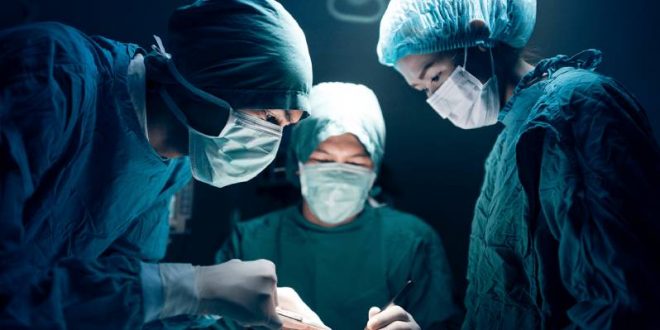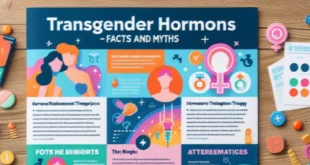This is one of the more controversial aspects of the transgender (TG) experience. There are many transgender folk who choose not to have any surgery, some who pick and choose which surgeries they want, and some who feel they have no choice but to go through all of them. There are also the moral pressures to consider from internal and external sources. Average cost ranges are as follows:
Chest…………………..$2100 – $7500
Hysterectomy………….$10,500 – $18,000
Metoidioplasty…………$8,000v- $15,000
Phalloplasty……………$15,000 – 150,000
Please keep in mind that these costs vary from doctor-to-doctor as well as from country-to country.
Most of the surgeries listed above can only be acquired by paying the surgeon cash up front. The cost is one of the weightiest factors as to whether a person decides to have the surgery or not. Many FTMs are under-employed, if not unemployed. Those who do seek surgical alteration often work 2 and 3 jobs to save the money needed. Some of the younger FTMs work the streets just for survival money, although a few have used this as a means to supplement other earnings for surgeries. A few FTMs have been able to acquire some or all of their surgeries through insurance. This is very rare since most insurance companies explicitly exclude transsexual treatments from their covered procedures.
When to have any of the surgeries is also an issue for many FTMs. The Harry Benjamin Standards of Care (SOC) clearly delineates when a transsexual can do certain things pertinent to their transition. Many transsexuals who only choose to do one or two of the surgeries circumvent the SOC. However, this can mean seeking doctors through the black market. The other concern for many FTMs is the condition of the body before and after taking hormones. There have been several FTMs who have sought and received different surgeries before taking hormones. Reasons for this will be disclosed in the following paragraphs.
The double mastectomy and/or mastopexy is the procedure most commonly sought by FTMs. The biggest reasons for this are image/presentation and comfort. Transsexuals are asked to dress and live in the world as a person of the gender they are trying to achieve for a set amount of time&emdash;usually six months to one year before they are allowed to pursue hormone therapy or any of the surgeries. The biggest obstacle for an female to male is usually hiding the breasts. However, this is absolutely necessary. Far too many FTMs have been humiliated, harassed, and even beaten up for walking into the men’s room because their chests gave them away. This harassment is not exclusive to the bathroom situation. Mainstream society is notorious for its violence toward anyone presenting a conflicting image, period. Many FTMs choose to have this surgery before they pursue hormones for several reasons. With testosterone comes body hair. The chest hair that grows in around the sutures and incisions can, at the very least, be incredibly annoying, and in the extreme can become ingrown and even cause infection. Many FTMs also look to the advantage of estrogen keeping the skin more pliant as a bonus. Several individuals have gone through the mastopexy, waited 6 to 9 months to heal, and then begun testosterone therapy. It seems that most of these individuals have less visible scarring or less extensive scarring. The muscle growth into the chest with the testosterone seems to them more natural as well.
A couple of advantages to testosterone are that the healing rate (from surgery) appears to be quicker, and with the advanced muscle development, there is less chance of severed or damaged muscle.
Some of the older FTMs have had the advantage of having an hysterectomy before they’ve sought hormone therapy. Many FTMs feel there is an advantage to this as there will be less of a strain on the liver once testosterone therapy is initiated. Some symptoms of chemical/hormonal imbalance (such as migraines) often disappear after the FTM has his hysterectomy. One advantage of hysterectomy is the possibility of either reducing the dosage of testosterone or extending the time period between injections, thus possibly reducing the strain on the liver. Those who do undergo this surgery are sometimes advised to then take small doses of estrogen. Many refuse because of the implications of femaleness. Many people do not understand that estrogen is present in the male body as well. Testosterone is also used to alleviate osteoporosis, though, and estrogen may not be necessary. People should also be aware that excess testosterone in the system is naturally converted into estrogen.
There are many who choose not to undergo an hysterectomy and suffer no ill-effects, although there does seem to be a greater degree of difficulty dealing with the last few days before the next injection, known as the trough. In the 3 to 4 days before the next injection, many FTMs (with female reproductive organs still functioning) report irritability, shortness of attention span, headaches, fatigue, lack of sex drive, and sometimes cramping similar to menstrual cramping. Some FTMs who experience extremes of these symptoms then pursue hysterectomy, or opt for an oophorectomy.
In recent years, more and more FTMs are choosing the metaoidioplasty (also inaccurately referred to as genitoplasty, and often contracted to metoidioplasty). One reason is money. It is less expensive, and therefore easier to set one’s sights on as an attainable goal. Metaoidioplasty is the freeing of the enlarged clitoris (micro penis) and construction of a scrotal sack with testicular implants. The patient can opt for several choices. A urethral extension can be constructed so that the FTM can pee from his freed penis. This choice carries the risk of infections, fistulas, and corrective surgeries for complications. A hysterectomy and / or vaginectomy can be performed simultaneously. If the vaginal canal is left intact, this gives the FTM better options if he chooses to pursue a phalloplasty in the future.
The phalloplasty is usually a series of surgeries, not just one. The surgeries are still brutal and leave extensive scars on several places of the body&emdash;usually the inside of one forearm, the lower side of the torso, and the side of one thigh. Although these surgeries have been improved upon in the past ten years, there are still major drawbacks that deter many FTMs. The amount of time spent in recovery from the surgeries is extensive. Some FTMs have spent nearly one year in recovery stages from the surgeries, dealing with infections, getting corrective surgeries, and sometimes having to deal with their body’s out-and-out rejection of the graft. The emotional toll of this surgery can be incredibly high. The surgically constructed penis is also non-functional sexually. It does not get erect or flaccid on its own. Most constructions utilize Teflon inserts to achieve erections. A few surgeons use pumps similar to those used for penile reconstruction in genetic males suffering from cancer or erectile dysfunction. There is a chance of rejection with this option. The constructed penis frequently does not look like a penis. In recent years, some doctors have been fine-tuning their surgical techniques and have also teamed up with tattoo artists for better aesthetic results.
Notes on Gender Transition
Revised September, 1997
FTM 101 — The Invisible Transsexuals
By: Shadow Morton, Yosenio Lewis, Aaron Hans–James Green, Editor
 Lesbian, Gay, Bisexual, Transgender & Intersex News Lesbian News, Gay News, Bisexual News, Transgender News, Intersex News, LGBTI News
Lesbian, Gay, Bisexual, Transgender & Intersex News Lesbian News, Gay News, Bisexual News, Transgender News, Intersex News, LGBTI News




